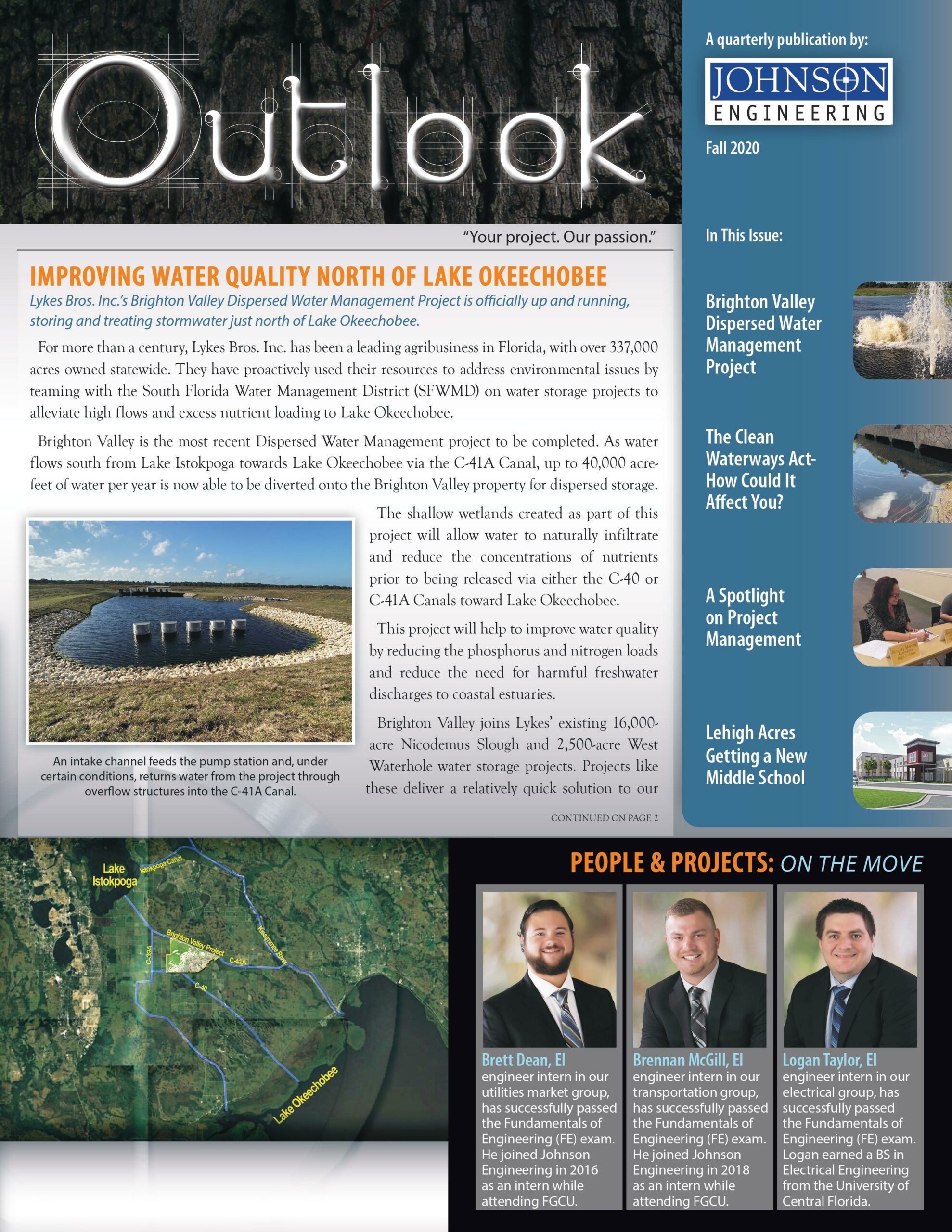 For more than a century, Lykes Bros. Inc. has been a leading agribusiness in Florida, with over 337,000 acres owned statewide. They have proactively used their resources to address environmental issues by teaming with the South Florida Water Management District (SFWMD) on water storage projects to alleviate high flows and excess nutrient loading to Lake Okeechobee.
For more than a century, Lykes Bros. Inc. has been a leading agribusiness in Florida, with over 337,000 acres owned statewide. They have proactively used their resources to address environmental issues by teaming with the South Florida Water Management District (SFWMD) on water storage projects to alleviate high flows and excess nutrient loading to Lake Okeechobee.
Brighton Valley is the most recent Dispersed Water Management project to be completed. As water flows south from Lake Istokpoga towards Lake Okeechobee via the C-41A Canal, up to 40,000 acrefeet of water per year is now able to be diverted onto the Brighton Valley property for dispersed storage.
The shallow wetlands created as part of this project will allow water to naturally infiltrate and reduce the concentrations of nutrients prior to being released via either the C-40 or C-41A Canals toward Lake Okeechobee
This project will help to improve water quality by reducing the phosphorus and nitrogen loads and reduce the need for harmful freshwater discharges to coastal estuaries.
Brighton Valley joins Lykes’ existing 16,000- acre Nicodemus Slough and 2,500-acre West Waterhole water storage projects. Projects like these deliver a relatively quick solution to our current water crisis, providing the immediate relief needed while governmental entities implement long-term solutions.
Johnson Engineering has worked with Lykes for decades on various projects and was eager to help make the Brighton Valley project a reality. Our wide variety of in-house services helped expedite the project design and permitting through the simultaneous coordination of surveying and mapping, GIS, electrical, and surface water management engineering services.
The original conceptual design anticipated Brighton Valley would entail a simple impoundment similar to that used at the Nicodemus Slough project to its south. However, various challenges prompted design modifications to route flows on the site, detain water in the system, and strategically release it as needed.
Our team designed a management system to meet the inflow and outflow rates required by the SFWMD, while minimizing construction costs with features consistent with the original agricultural impoundment-style vision. Developing a robust operational plan for the project, in coordination with Lykes, allowed us to fine tune the components of the system, without adding more complexity to the modeling and design approach.
The operational control strategy developed by our team considered the levels in the canals and impoundment areas as well as pump sequencing scenarios. Given the watershed divide and regulatory limitations on canal stages, this task included estimating water levels necessary for operating the project under different scenarios and creating the framework for operational coordination between Lykes and the SFWMD. These considerations make Brighton Valley one of the most complex dispersed water storage projects to-date and highlight the potential of the program to more adaptively address water supply and storage challenges through use of private lands.
A ribbon cutting ceremony was held in September, when they turned on the pumps for the first time. Johnson Engineering is proud to provide our knowledge and expertise on such an important project which will have a positive impact on the ecosystem downstream.































































